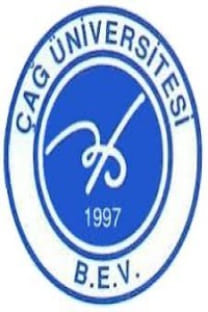Soğuk Savaş Sonrası Dönemde Uluslararası Çatışmaların Ekonomik Boyutu
Bu makale, Soğuk Savaş sonrası dönemde kendini gösteren bazı temel ekonomik sorunların nasıl uluslararası çatışmaları tetikleyebildiğine dair analitik bir tartışma ortaya koymaktadır. Bu bağlamda, özellikle potansiyel olarak uluslararası çatışmaların kaynağı olabilen yüksek teknoloji rekabeti, ticari ayrımcılık, dış yatırım, dışa yönelen sermaye ve sınırlar-ötesi sermaye akışı, beklenmedik ekonomik krizler ile Kuzey-Güney eşitsizliği sorunları üzerinde durulmaktadır. Çalışmada, her ne kadar bahsi geçen sorunların doğrudan uluslararası çatışmalara yol açmadığına işaret edilmekle birlikte, uluslararası toplumun bu sorunlara ciddi bir biçimde eğilmesi ve uluslararası aktörlerin işbirliği yapma gereğine dikkat çekilmektedir
Anahtar Kelimeler:
Uluslararası Çatışma, Ticari Rekabet, Ticari Ayrımcılık, Dış Yatırım, Ekonomik Krizler, Kuzey-Güney Eşitsizliği.
The Economic Dimension of International Conflict in the Post-Cold
This article discusses some of the major economic problems in the postCold War era in conjunction with international conflict. In this respect, the article particularly identifies seven issues, high-tech trade rivalry, trade discrimination, foreign investment, outward investment, trans-border flows, unpredictable economic crises, and North-South inequalities that have a potential to create conflict among states. While the study argues that the economic problems discussed in the work do not necessarily lead to international conflict, it, nevertheless, stresses that they call for particular attention and international cooperation for the sake of international stability
Keywords:
international Conflict, Trade Rivalry, Trade Discrimination, Foreign Investment, Economic Crises, North-South Inequalities,
___
- Bailey, D.J. (2011) The European Union and Global Governance, London, Routledge.
- Boodreaux, D. J. (2008) Globalization, Westport, Conn., Greenwood Press.
- Borchardt, K.D. (2010) The ABC of European Union Law, Luxembourg, Publication Office of the European Union.
- Burton, J.W. (1990) Conflict: Human Needs Theory, New York, St. Martin’s Press.
- Burton, J.W. (1997) Violence Explained, Manchester and New York, Manchester University Press.
- Economic Report of the President (2011) Washington D.C.
- Ho, Lok-Sang and Wong, John (2011) APEC and the Rise of China, Singapore and Hackensack, NJ, World Scientific.
- Kehl, J.R. (2009) Foreign Investment and Domestic Development: Multinationals and the State, Boulder, Publishers. CO, Lynne Rienner
- Moran, T.H. (1996) “Trade and Investment Dimension of International Conflict”, In Chester A. Crocker (Ed.), Managing Global Chaos, Washington D.C., United States Institute of Peace Press.
- Moss, D. (2011) Children and Social Change: Memories of Diverse Childhoods, London and New York, Continuum.
- Posner, R.A. (2009) A Failure of Capitalism, Cambridge, Mass., Harvard University Press.
- Seligson, M.A. and Passe-Smith, J.T. (2003) Development and Underdevelopment: The Political Economy of Global Inequality, Boulder, CO, Lynne Rienner.
- Sevilla, C.R. (2003) “The WTO’s North-South Conflict: A Dangerous New International Economic Order?”, National Interest; Winter, 2003.
- Siebert, H. (2007) The World Economy: A Global Analysis, London and New York, Routledge. Internet References
- http://www.cisstat.com (accessed January 27, 2012).
- http://www.naftanow.org (accessed February 2, 2012).
- http://www.globalenvision.org (accessed February 6, 2012).
- ISSN: 1304-8392
- Yayın Aralığı: Yılda 2 Sayı
- Başlangıç: 2004
- Yayıncı: Çağ Üniversitesi
Sayıdaki Diğer Makaleler
Öğretmenlerin Kişilik Özelliklerinin Duygusal Emek Gösterimlerine Etkileri
Memduh BEGENİRBAŞ, Rukiye Can YALÇIN
Turizm Endüstrisi ve Standardizasyon: Uygunluklar ve Fırsatlar
Hizmet Sektöründe Sözsüz İletişim Algısı Üzerine Ampirik Bir Çalışma
Soğuk Savaş Sonrası Dönemde Uluslararası Çatışmaların Ekonomik Boyutu
Öğretmenlerin Kişilik Özelliklerinin Duygusal Emek Gösterimlerine Etkileri
Memduh BEGENİRBAŞ, Rukiye Can YALÇIN
Girişimci Ve Yenilikçi Davranışın İş Performansına Etkisinde Çevresel Belirsizliğin Rolü
